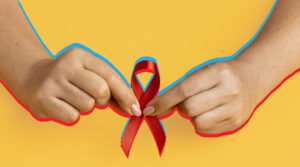El diagnóstico de forma muy tardía a una persona con VIH resulta mucho más costoso a mediano plazo que detectar el virus oportunamente. De acuerdo con un estudio realizado en Países Bajos, costaría 246% más tratar a alguien que tiene una infección avanzada.
La investigación analizó los datos de la cohorte ATHENA, un acervo de información que se nutre cotidianamente de las 27 clínicas especializadas en VIH con las que cuenta aquella nación europea.
De acuerdo con lo que informa el Grupo de Trabajo sobre Tratamientos del VIH (gTt-VIH), los Países Bajos requieren a todos sus habitantes pagar por un seguro básico de salud, el cual permite brindar atención y tratamiento a las personas con VIH a través de las clínicas especializadas.
Cabe mencionar que el diagnóstico de VIH se considera oportuno o a tiempo cuando, al momento de la detección, la persona tiene un sistema inmunológico casi tan fuerte como alguien que no tiene el virus.
El valor del tiempo
El análisis, publicado en la revista médica PLoS ONE, revisó la forma en que el tiempo transcurrido entre el momento estimado de la infección por VIH y el inicio del tratamiento antirretroviral condiciona los costos de la atención durante los primeros cinco años de tratamiento. A esto se sumaron otros factores que también generan costos extras.
Se incluyeron los datos de 1,200 personas que iniciaron tratamiento en 2013; la mayoría eran hombres. El equipo de investigación clasificó a los participantes en tres categorías:
- Diagnosticados a tiempo: esto es, con un sistema inmunológico aceptablemente fuerte, medido con una cantidad células CD4 mayor a 350 células/mm3 de sangre.
- Diagnosticados de forma tardía: personas con el sistema inmunológico afectado, cuya cantidad de células CD4 estaba entre 200 y 350 células/mm3.
- Diagnosticados de forma muy tardía: quienes mostraban un sistema inmunológico severamente deteriorado, con menos de 200 células/mm3.
Al comparar a las personas con diagnóstico tardío con las que fueron diagnosticadas a tiempo, las primeras tenían más probabilidad de ser mayores, de origen extranjero y de haber adquirido el VIH por vía heterosexual.
En cuanto al costo más elevado de la atención de las personas con diagnóstico tardío, éste estuvo determinado por gastos que no estaban directamente relacionados con el tratamiento del VIH, por ejemplo, tratamientos para otras enfermedades o internamientos en el hospital.
Se observó que, durante el primer año de tratamiento, las personas con diagnóstico muy tardío pasaron en promedio 8.3 días hospitalizados, muy por encima de los 0.38 días de hospitalización que en promedio tuvieron quienes fueron diagnosticados a tiempo.
Durante los 5 años evaluados, las personas con diagnóstico tardío presentaron un sobrecosto del 56% para el sistema de salud, y aquellas con un diagnóstico muy tardío presentaron un sobrecosto de 246%.
Obstáculos para el diagnóstico
Los autores del estudio señalaron que las personas postergan las pruebas de detección de VIH por varios factores, entre ellos la baja percepción de riesgo frente al virus, misma que sucede especialmente en población heterosexual y cisgénero. A esto se puede sumar la escasa información acerca del VIH o el estigma que pesa sobre la infección, que hace que las personas eviten la prueba.
Frente a este panorama, es importante difundir información certera, científica y libre de estigma para tratar de cambiar la percepción sobre el VIH entre quienes no se sienten en riesgo. Además, agregan los investigadores, debería acercarse y promoverse la prueba de detección entre estos grupos, lo cual tendría no sólo beneficios en la salud de las personas con VIH, sino también traería importantes ahorros.
Recuerda que en AHF América Latina y el Caribe trabajamos cada día por acercar los servicios de VIH a todas las personas. Si quieres hacerte una prueba de VIH gratuita, localiza nuestras oficinas en tu país y haz tu cita ya.





